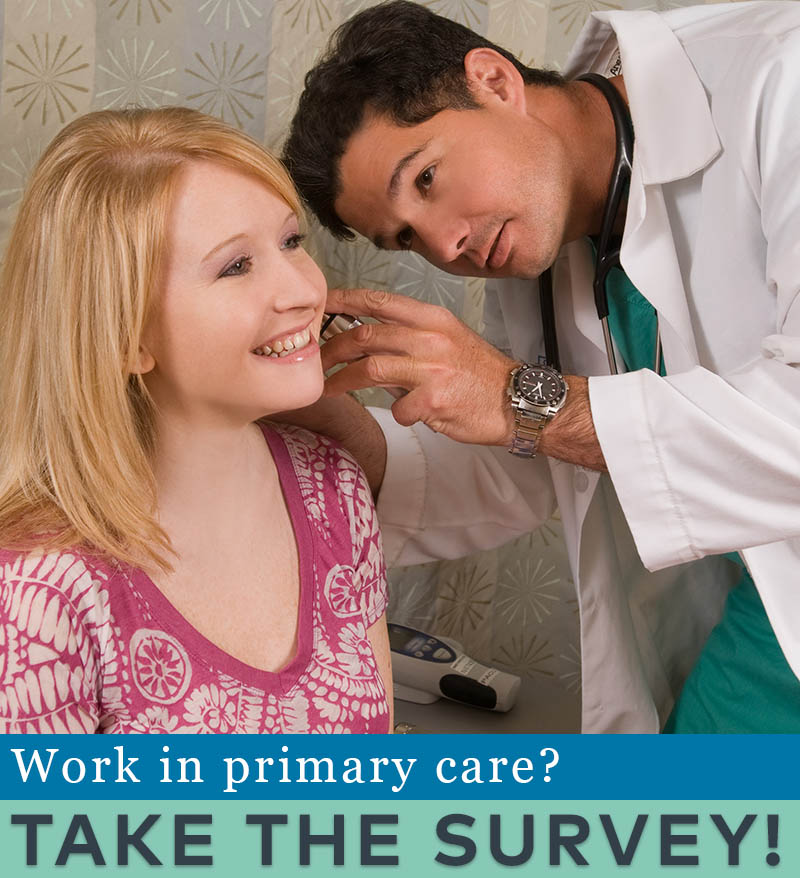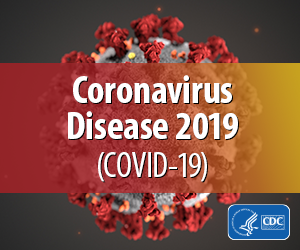You are looking at an archived version of our site. Please visit thepcc.org for a fresh, new experience!
You are here: Array » Primary Care & COV ...
Primary Care & COVID-19: Week 22 Survey
Check back regularly for the latest survey results and updates.
For data from the previous survey, see Round 21 Results.
The Primary Care Collaborative is partnering with the Larry A. Green Center to regularly survey primary care clinicians and patients to better understand the impact of COVID-19 in real time.
Who replied to the survey in round 22?
Over 580 primary care clinicians responded to the latest survey (round 22). Responses came from 47 states, the District of Columbia, and Gaum. Texas and Washington represented the largest share of the national sample with 14% and 12% of total responses, respectively. Oregon, Washington, and California each represented 5-7% of total responses. About two-thirds (68%) of responses came from primary care physicians (MDs and DOs); nurse practitioners represented a fifth (19%) of responses, followed by PAs (3%), Phd and PharmD (each 1%), and other (8%). 42% of respondents are employees in a hospital or health system, followed by 29% who are owners or partners in their practice, and 17% who are employees at an independent practice. Respondents’ specialties were consistent with past weeks: two-thirds (66%) family medicine; 15% internal medicine; 6% pediatrics; 5% geriatrics; 2% mental/behavioral health; 1% pharmacy; and 6% other. Nearly 60% of clinicians report working in a practice that serves a majority of patients with multiple chronic conditions. A fifth work in a rural setting, and 30% work in a designated patient-centered primary care home.
Round 22 of the clinician survey was fielded October 16-19, 2020. Total responses: 582.
Results at a glance
-
COVID cases are rising, but the strain on practices may be holding steady for now. Sixty percent of respondents say they have seen a rise in COVID-19 illness in their communities. Yet respondents continue to rate the level of “unusual strain” on their practices due to COVID-19 at around the same levels over the past four survey rounds dating back to late August. Consistently around half of respondents rate their level of strain as a 4 or 5 out of 5. And the percent of respondents rating their strain as low (1 or 2) has ranged between 11% and 19%.
-
Patients’ overall health continues to suffer due to the pandemic. Over 85% of respondents report that the mental health of their patients has decreased during the pandemic, with 31% seeing a rise in patients suffering with addiction. Over a third (37%) say their patients with chronic conditions are in “noticeably worse health resulting from the pandemic.” This is due, in part, to visits that are not happening: 56% of surveyed clinicians have seen an increase in negative health burdens due to delayed or inaccessible care.
-
Practices are rising to the challenge by adapting the way they deliver care, but it may not be fast enough. Over two-thirds of practices are using telehealth for visits with patients who have stable chronic conditions, and over 60% use telehealth for mental health visits. Twenty-seven percent say they are more involved in helping patients with poor access to food, housing, and employment, and over a fifth have increased connections to community organizations. Still, only 16% of respondents report that their practice has added capacity to help patients with mental or behavioral health, despite the increasing burden.
-
Financial barriers faced by primary care practices may have lessened—for now. Only 6% of respondents say they are unable to pay some of their bills. And where reimbursement for virtual visits used to pose significant challenges to primary care, just 7% of surveyed clinicians now say that they would like to use video-based care more often but can’t because of low reimbursement. (Fifteen percent say the same for phone-based care). Today, bigger obstacles to practices include trouble hiring new staff (35%).
-
COVID-19 and influenza still loom over primary care. Testing for COVID-19 remains a challenge for primary care practices, with 44% reporting that results take more than two days to receive and 26% reporting they cannot get patients tested as often as they think they should. Roughly a quarter (23%) say low amounts of PPE or reused PPE may them feel unsafe at work. Ten percent say they have no flu vaccine.
Learn more: Download the Round 22 Clinician Survey Executive Summary (includes select open-ended answers to survey questions)
| Allegato | Dimensione |
|---|---|
| 752.4 KB |

Are you a physician, nurse practitioner, or PA working in primary care?
Help PCC and the Larry A. Green Center track how your practice is responding to the COVID-19 outbreak by completing the Green Center's occasional survey.
The regular surveys are no longer being conducted.
COVID-19 Updates
Maggio 9, 2022 | Primary Care Collaborative
Aprile 19, 2022 | Primary Care Collaborative
Aprile 19, 2022 | Primary Care Collaborative
Marzo 7, 2022 | STAT
Febbraio 27, 2022
- 1 di 39
- seguente ›

Recent News
Agosto 16, 2024
Agosto 12, 2024
Luglio 16, 2024
Giugno 24, 2024
May webinar highlights: “The Commercial Market: Alternative Payment Models for Primary Care” Nate Murray explains w… https://t.co/KX9Wi2w6oY —
2 anni 6 mesi fa
@CMSinnovates’ primary care strategy is rooted in a 2021 @theNASEM’s report which called #primarycare “foundational… https://t.co/glbPxvCysg —
2 anni 6 mesi fa
@CMSinnovates has a new #primarycare strategy, envisioning “ACO-based primary care model tests that may focus on pr… https://t.co/aJGF1z411l —
2 anni 6 mesi fa
- Page 1
- ››
Menu secondario
Copyright © 2024 Primary Care Collaborative




